Advances in the Seiko Astron GPS Solar Watch Allow A Fresh Design and Improved Functionality
Noted for its ability to instantly display the accurate local time in any part of the world, the Seiko Astron GPS Solar watch has been touted as the “second revolution” following the quartz watch. The model announced in 2022, 10 years after the debut of the Astron GPS Solar, is the sport design series. This new series embodying Seiko innovation and featuring a more modern design than previous Seiko Astron watches, gains improved functionality thanks to a new movement. Astron’s design freedom has also been raised, creating a more angular and contemporary-looking watch.
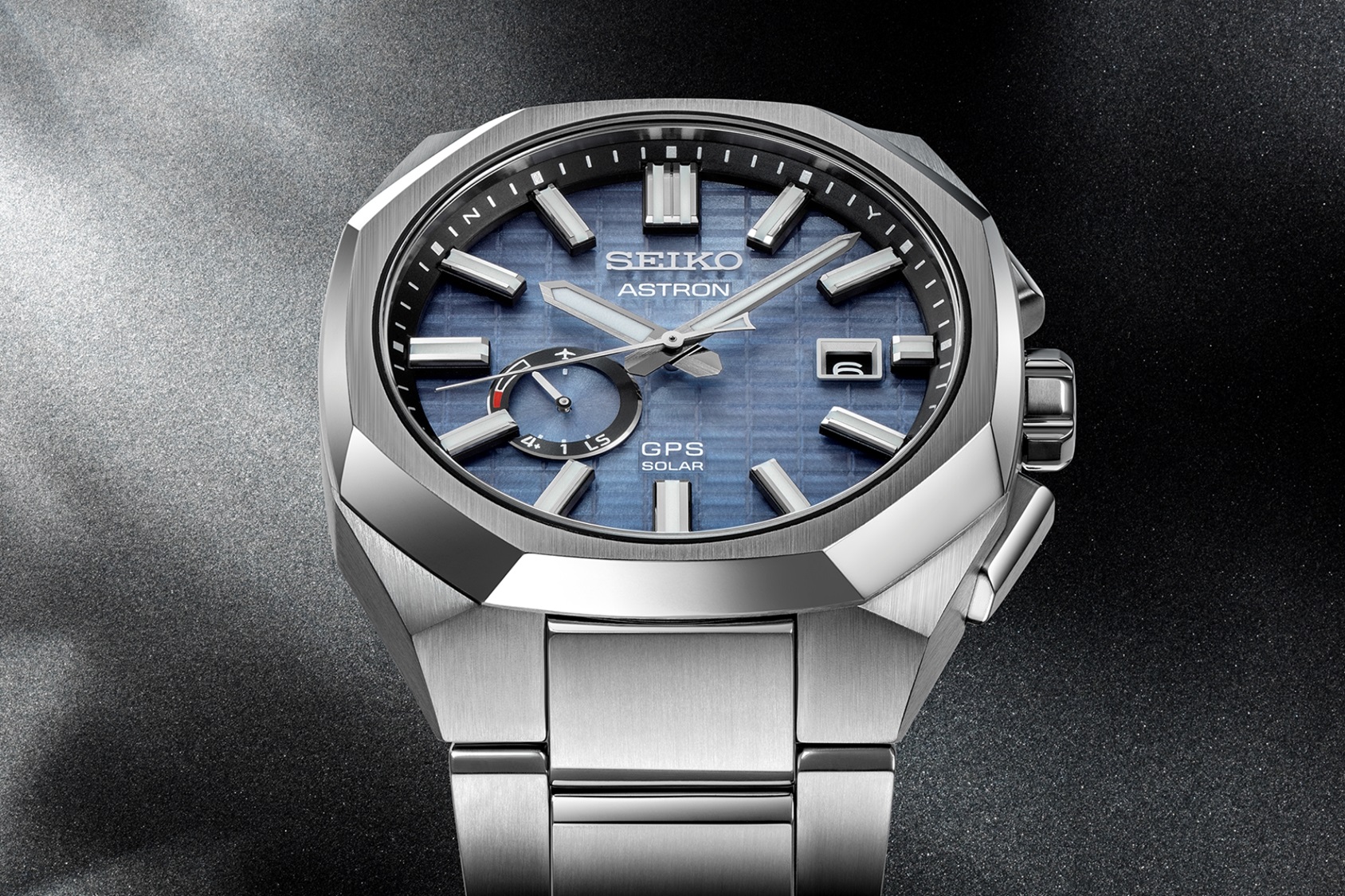
Photographs by Eiichi Okuyama
Text by Yuzo Takeishi
Carrying on the tradition of accurate timekeeping with the Astron name
The Seiko Astron GPS Solar caused a sensation upon its debut in 2012 as the world’s first GPS solar watch. Besides its ability to receive signals from GPS satellites orbiting some 20,000 kilometers above the earth, and to display the local time based on this accurate positional information, it used solar charging for more practical functionality. It was touted at the time of its debut as the “second revolution.” Why the “second”? That goes back to the first revolution in Seiko’s history, the completion of the world’s first quartz watch.
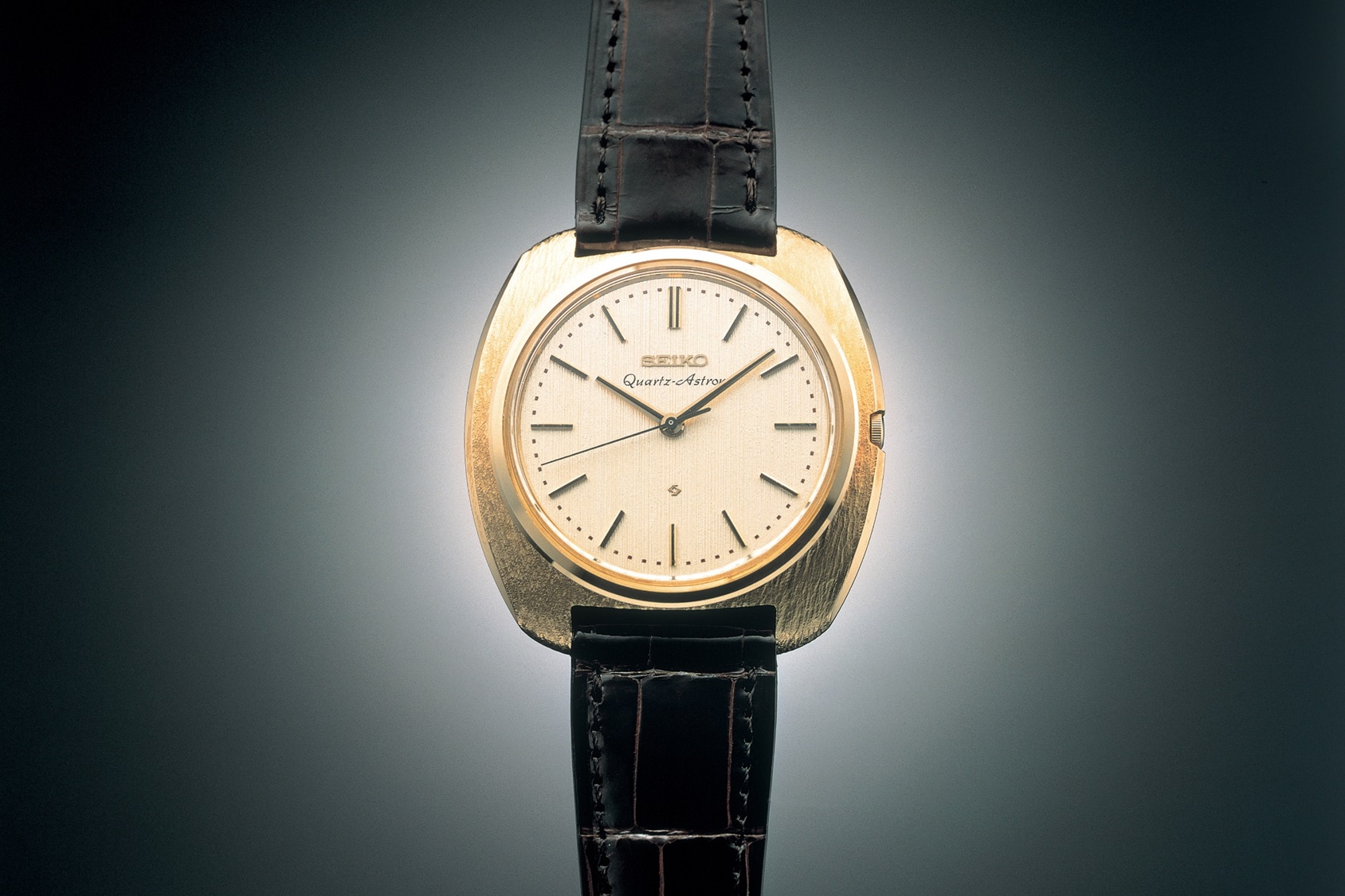
The world’s first quartz watch to be commercially marketed was the Quartz Astron 35SQ, released on December 25, 1969. Not only did it achieve accuracy far above that of mechanical watches, with a monthly variation within ±5 seconds, but it also incorporated a one-second ticking motion of the seconds hand using an open-type step motor, which became a standard feature of quartz watches made thereafter. While the original model came in an 18K yellow gold case, the following year saw the release of a stainless steel model.
Back in the 1950s, in the process of developing a watch with higher accuracy than the mechanical watches up to that time, Seiko turned its attention to the crystal oscillator. The thinking was that, compared to ordinary mechanical clocks, a clock with a crystal oscillator at its heart could deliver one hundred times greater accuracy. There were challenges to be overcome, however, before a crystal oscillator could be used in a wristwatch.
The crystal oscillators made by Seiko at the time for broadcast station use were as big as a large locker, not at all something that could be carried around. Even so, Seiko decided that the crystal oscillator was the most promising technology for the next high-accuracy watch, and established a quartz watch development project at Suwa Seikosha (the current Seiko Epson).
As a result, the technology was successfully incorporated into a timekeeping device used at an international sports competition held in Tokyo in 1964, and a desktop quartz clock was marketed thereafter. Finally, as the culmination of this technology development, Seiko completed the world’s first quartz watch, the Quartz Astron 35SQ, in 1969.

The Seiko Astron, appearing in 2012 with the same name as the world’s first commercial quartz watch, was itself a world first as a GPS solar watch. Not only was it able to obtain accurate positional information and local time from GPS satellite signals, but it was also powered by a solar-charged battery for improved convenience. Shown in the photo is the first-generation 7X Series SAST003, adopting a titanium case and bracelet with a ceramic bezel. The case size was 47 mm, but smaller cases were developed for subsequent models.
Even though the core technologies, quartz and GPS solar, are different, the new watch resulted from the desire, as with the Quartz Astron, to go a step ahead of the age, and truly deserved to be called a second revolution.
A modern appearance made possible by the new Caliber 3X62 movement
Today, the Seiko Astron has grown to become one of the flagship brands among Seiko watches. In May 2022, 10 years after its debut, a new sport design series appeared. Geared to the dramatically changed lifestyles of the past few years, and with a modern design befitting a brand that embraces Seiko innovation, it is the perfect timepiece for the next-generation businessperson. Seiko decided to incorporate a metal bezel, seeking to raise the level of the design by making it both more dynamic and more refined. Three models in the third round of offerings achieved this vision: SSJ013, SSJ014, and SSJ015.
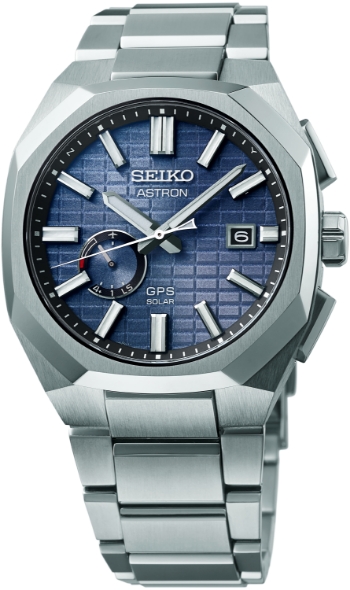
Seiko Astron GPS Solar SSJ013
GPS Solar (Cal. 3X62). Titanium (super-hard coating) (diameter: 41.2 mm, thickness: 12 mm). Water resistance: 10 bar.
Go to the product page
There was a major obstacle, however, in the way of adopting a metal bezel. It was the existence of the GPS antenna as part of the movement. The earlier 7X and 8X Series Seiko Astron watches used a ring antenna surrounding the movement, and a ceramic bezel was used to avoid blocking the GPS signals.
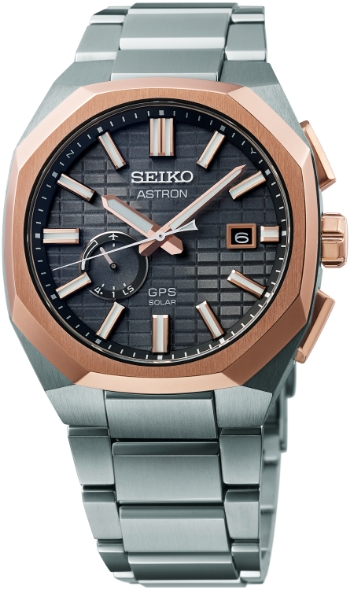
Seiko Astron GPS Solar SSJ014
GPS Solar (Cal. 3X62). Titanium (super-hard coating) (diameter: 41.2 mm, thickness: 12 mm). Water resistance: 10 bar.
Go to the product page
Thereafter, a new GPS-IC was adopted for improved reception, and a patch antenna with a totally different shape was incorporated, making it possible to give the 2018 5X Series a metal bezel. However, since the case size could be made no smaller than 42 mm with this design, there was not much prospect of further expanding the lineup. In 2019, a flat antenna was newly developed, greatly shrinking the space needed for the antenna and enabling the case size to be made smaller. The first ladies’ watch series, the 3X22, was added to the lineup; but because of the flat antenna, it again ended up not being able to accommodate a metal bezel.
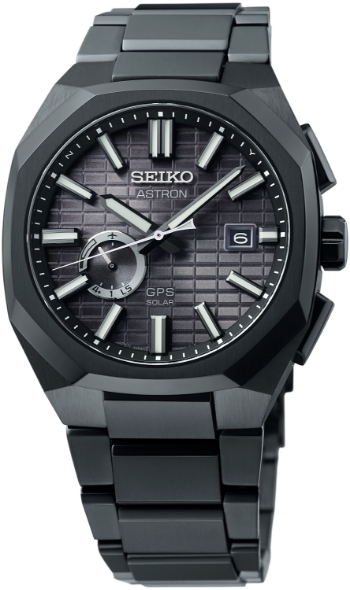
Seiko Astron GPS Solar SSJ015
GPS Solar (Cal. 3X62). Titanium (super-hard coating) (diameter: 41.2 mm, thickness: 12 mm). Water resistance: 10 bar.
Go to the product page
In other words, there was a trade-off between antenna performance and watch size with a GPS watch. A smaller case size results in a shorter distance between the antenna and the bezel, making it difficult to obtain the necessary antenna performance. To address this issue, Seiko Epson, which led the movement development, came up with the idea of adding a dielectric antenna to the flat antenna. Adopting this idea, the new caliber 3X62 movement achieved improved directionality and was able to capture satellite signals efficiently. At last, a small-diameter model with a metal bezel succeeded in obtaining the performance necessary in a GPS watch.
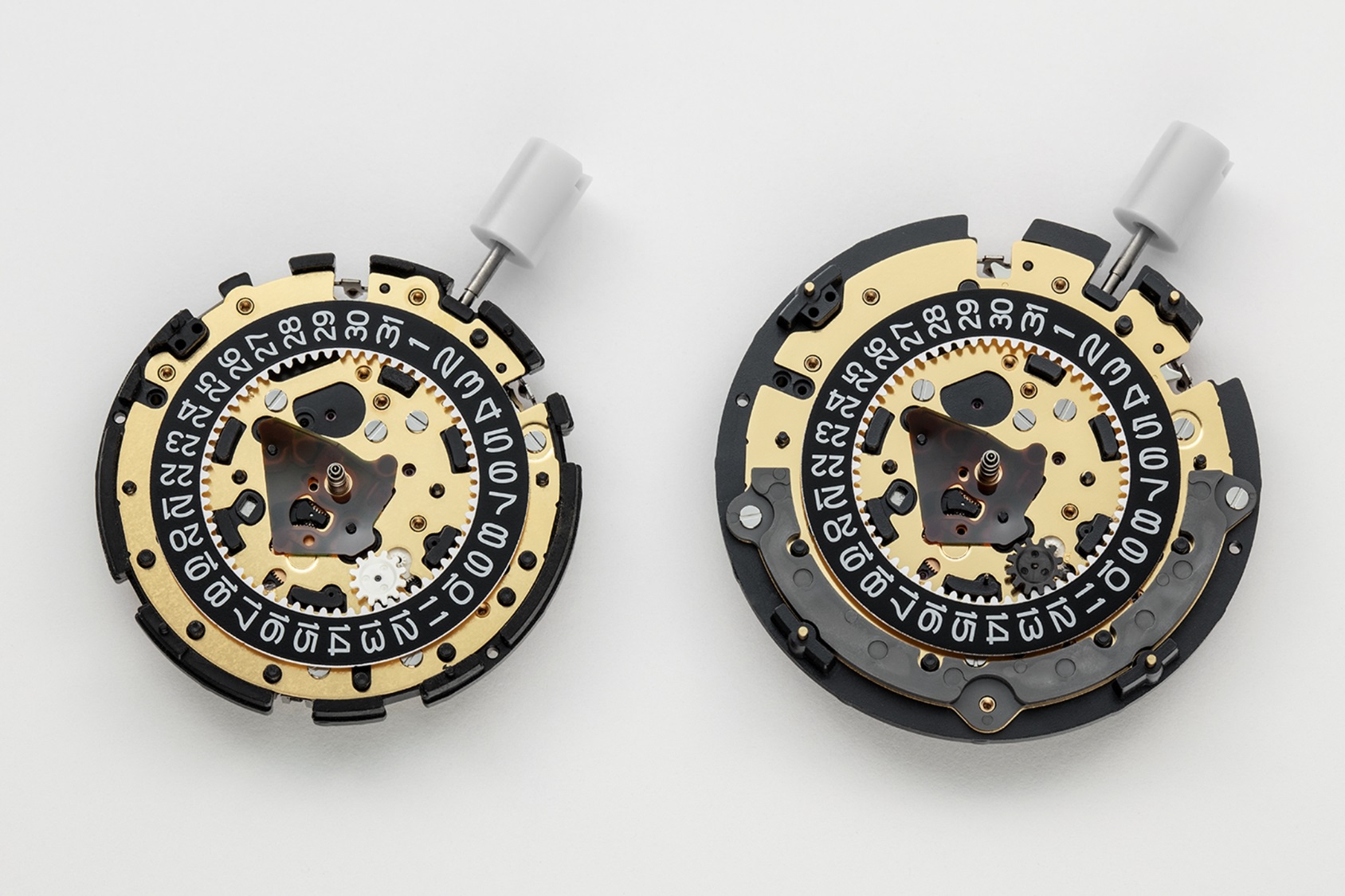
On the left is the caliber 3X22 movement, found in the 3X Series released in 2019. A flat antenna was used so the case size could be made smaller. With the latest sport design series, a new caliber 3X62 movement (right) was developed to enable the use of a metal bezel along with the small case. By deploying a gray dielectric antenna in the movement, a smaller size than the 5X Series was achieved; moreover, even with a metal bezel, the directionality of the captured satellite signals was improved.
Since a metal bezel itself had already been adopted in the 2018 5X Series, Seiko aimed with this new series for a design that would highlight the presence of the metal bezel, by expressing the solidness and brilliance of the crystal, which was used in the Quartz Astron 35SQ. Emblematic of this is the polygonal shape of the bezel. Rather than being a simple octagon, the angles of the sloped bezel surfaces arranged in vertical, lateral, and diagonal directions are respectively varied, and their positions are finely adjusted so that the bezel vertices are aligned with the indexes. In these ways, the bezel is endowed with a solid shape befitting a crystal block, while achieving a symmetric design.
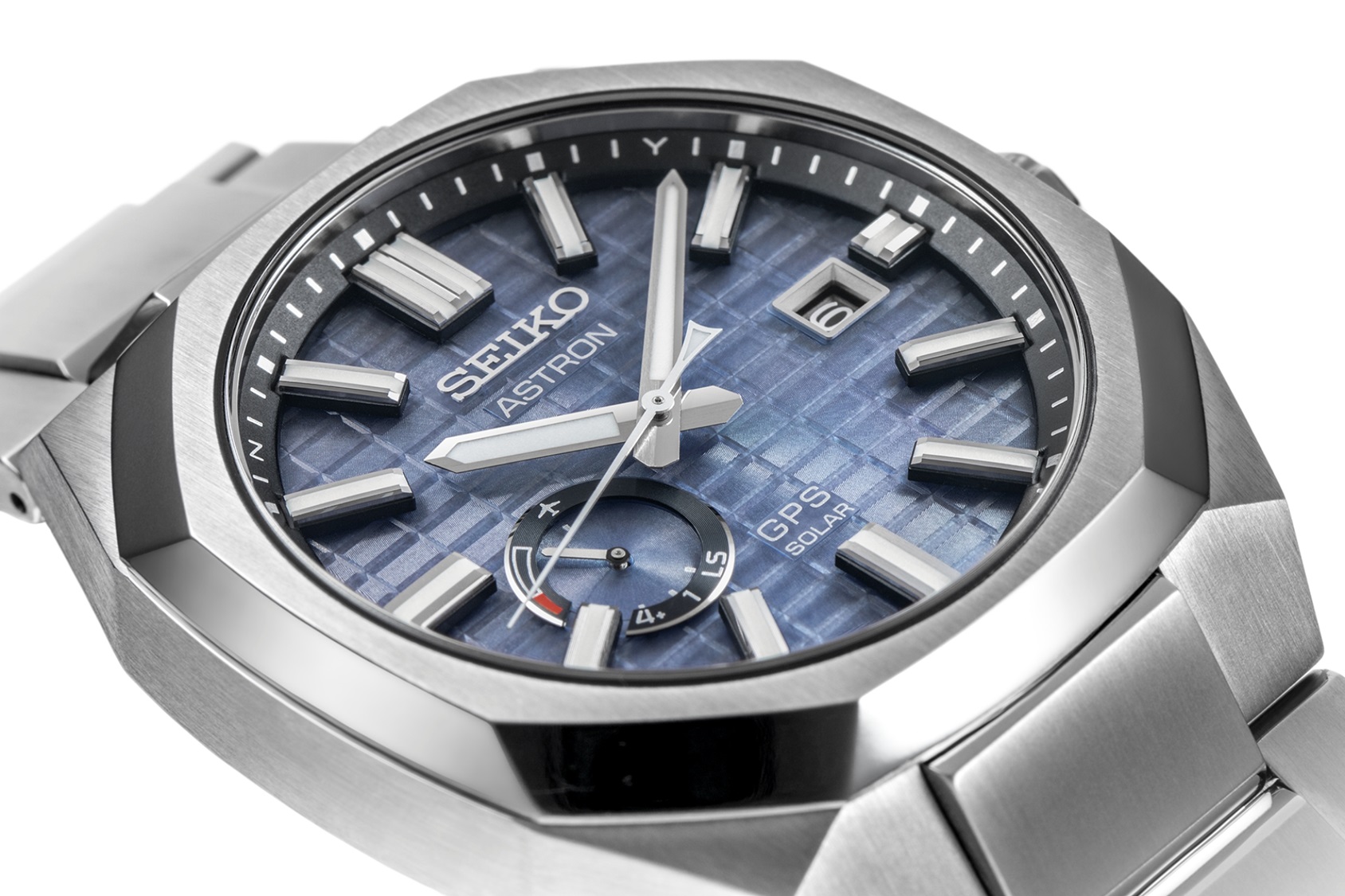
Advances to the GPS antenna brought about a polygonal metal bezel inspired by a solid crystal shape. Care was taken to keep the bezel from becoming too large, by means of sharp angles on the surfaces next to the 12 and 6 o’clock and the 3 and 9 o’clock positions.
Along with the solid bezel design, the crystal motif is also seen in the crystal box pattern devised for the dial. A number of patterns were considered initially. In the end, however, a rectangle adopting the silver ratio was chosen to complement the eight-sided bezel.
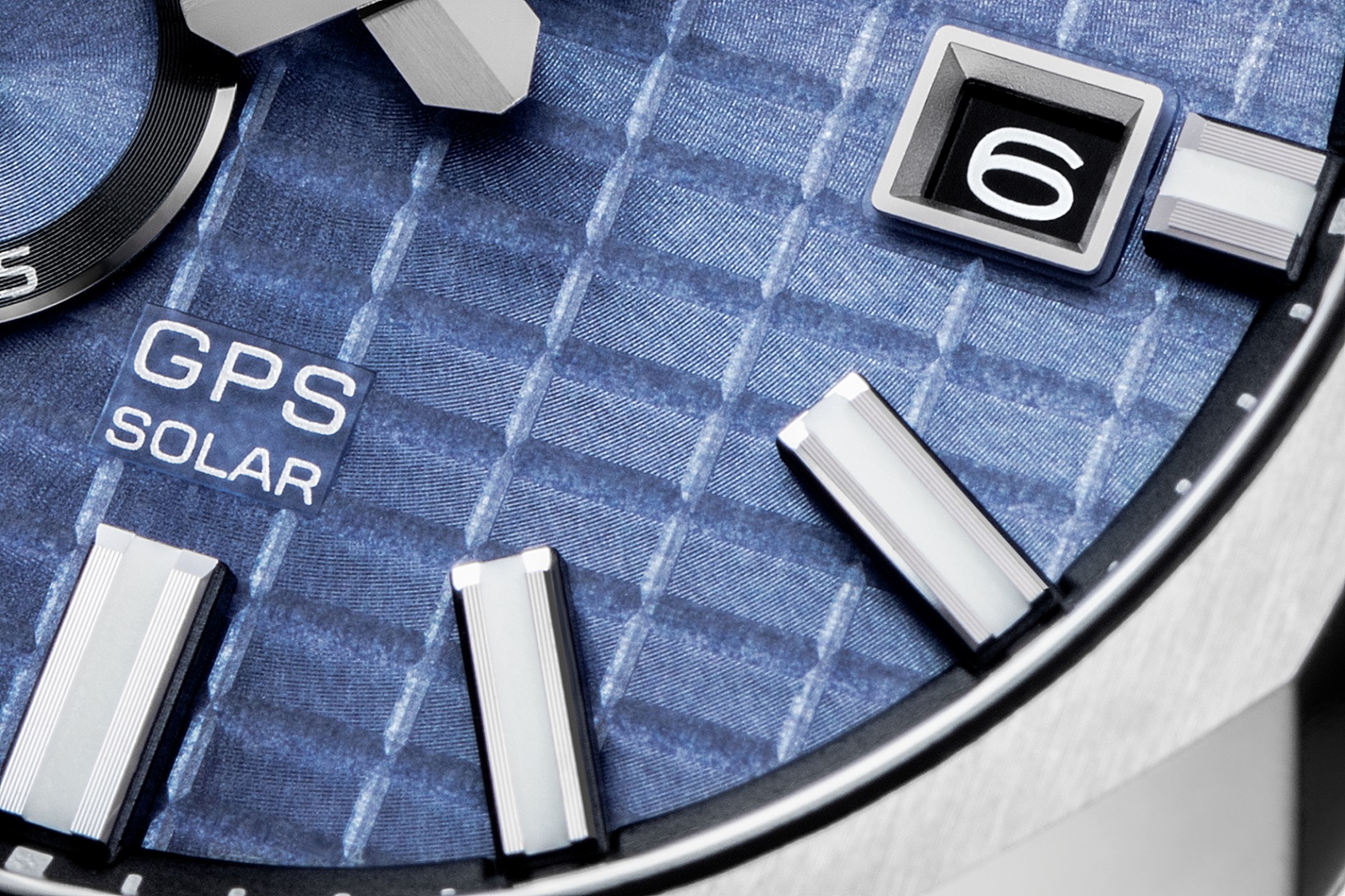
Matching the crystal motif of the polygonal bezel, the dial has been stamped with a crystal box pattern. A number of patterns were considered in the initial development phase, but a rectangular shape was settled on for its affinity with the eight-sided bezel.
In addition to proven features, wearing comfort was also refined.
Even while the development of this model focused on incorporating a metal bezel with a dynamic design, full attention was also paid to updating the functions and performance essential to a GPS solar watch. With the smaller case size, the three sub-dials on the earlier men’s model (5X53) have been concentrated into a single multi-indicator placed at the 8 o’clock position. Information received from GPS satellites, power reserve, and in-flight mode setting can all be checked on this sub-dial.
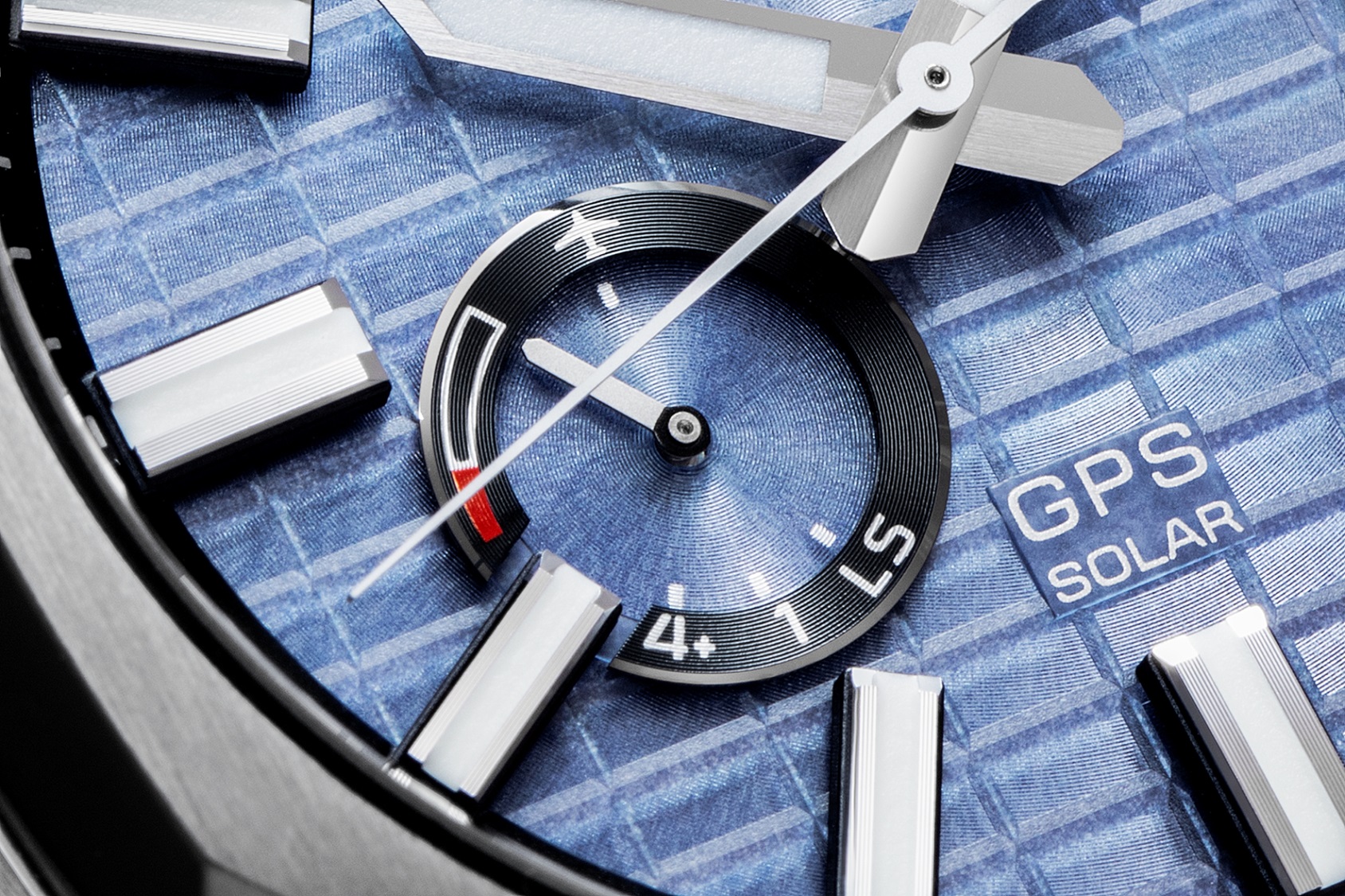
A new multi-indicator is located at the 8 o’clock position on the dial. GPS satellite information that was indicated by the seconds hand in the previous 3X22 model, as well as the solar-charged battery level and in-flight mode setting, can now be confirmed at a glance.
As with the 5X Series, the caliber 3X62 adopts buttons with a firm click sensation when pushed, for excellent operability. Seiko regularly seeks feedback from customers and shop staff. Among the comments received was the desire for pushbuttons with a recognizable click sensation; and in response to the voices from the marketplace, such buttons were adopted in the caliber 3X62 model. A major benefit of buttons that provide a clear tactile response is that they should reduce mistaken operations.
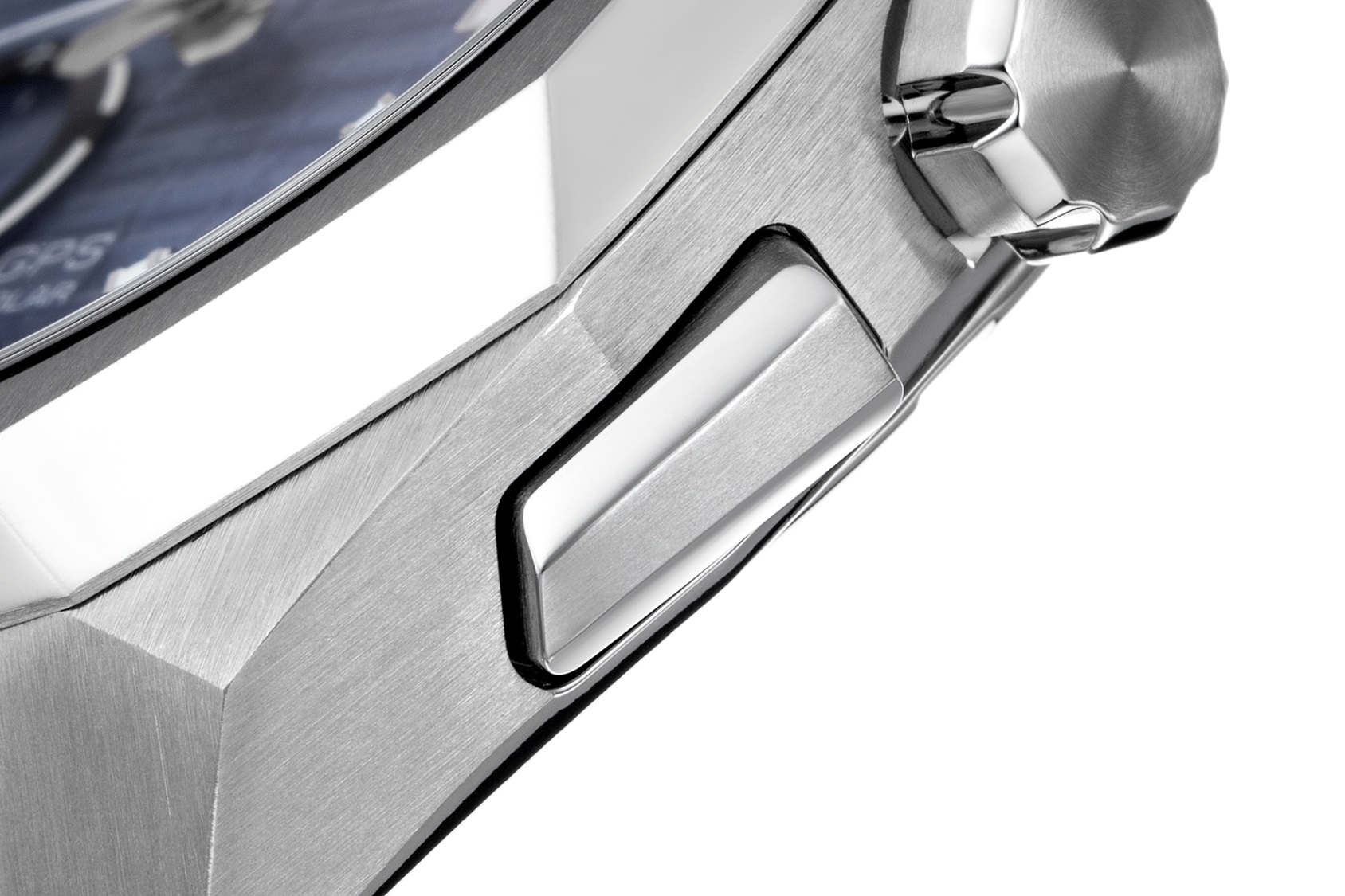
The buttons at the 2 o’clock and 4 o’clock positions have been modified to provide a firm click when pressed. The mechanism itself is similar to that in the 5X Series, but the button shape has been modified to realize comfortable operability on the smaller case.
The new model also feels light on the wrist despite the massive impression given by the shape. This comfort is achieved by adopting lightweight titanium for the case and bracelet, while designing the case to match the movement’s low center of gravity, moving the bracelet end pieces as closely as possible to the case, choosing a fastening position that feels good on the wrist, and making many other detailed design adjustments.

The new Astron sport design series is not only more compact, but features improved wearing comfort. By designing the case to match the low center of gravity of the movement, and shifting the bracelet end pieces as closely as possible to the case, the wrist fit is improved in a design that makes extensive use of straight lines.
By developing a movement aimed at achieving a watch with a contemporary look, the new sport design series advanced the exterior design of the GPS solar watch.
According to the head of the project team, “GPS function has reached a level of refinement allowing it to be used freely and comfortably by the customer.” If that is true, it raises hopes for a new approach to exterior design in next-generation models. By incorporating a powerful metal bezel, this model, made possible by advances to the GPS antenna, can be seen as a turning point for the Seiko Astron.
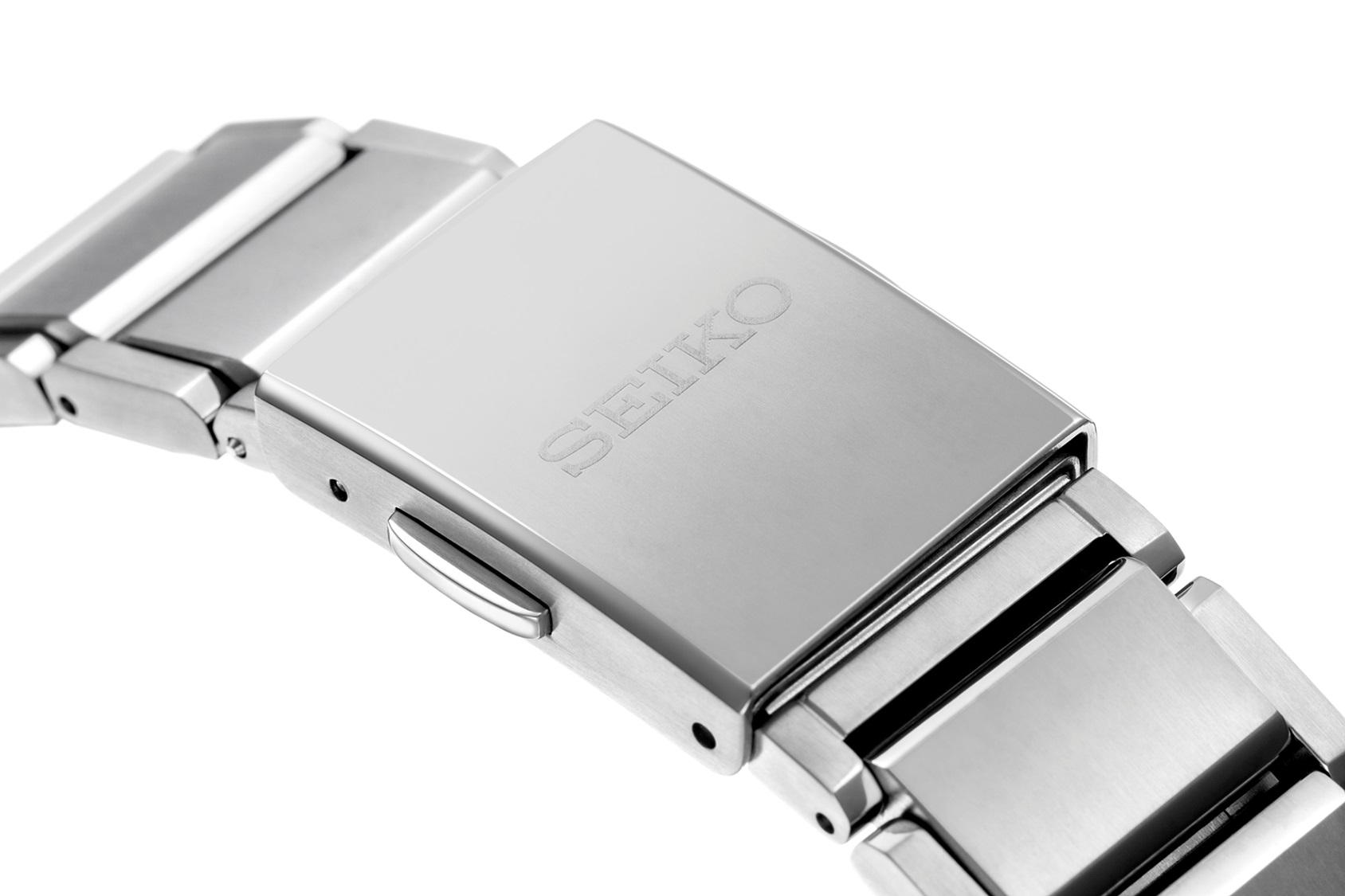
The buckle with smart adjuster mechanism, also seen in earlier Seiko Astron models, contributes to the improved wrist fit. This feature, which can extend up to 5mm in two steps, is triggered by deeply pressing the buttons on both sides of the bracelet.
The distinct presence of limited-edition models paying homage to Japan’s first wristwatch
The newest model evinces plenty of impact thanks to its dynamic metal bezel, but there is also a limited-edition version incorporating many of the same ideas while exhibiting a different presence than the regular model.
The year 2023 marks the 110th anniversary of Seiko launching Japan’s first wristwatch, the Laurel. K. Hattori & Co., to which Seiko traces its roots, was founded in 1881. Then, in 1892, Seikosha was established as a factory for making timepieces. Not only did the company go on to make its first pocket watch and to market the alarm clock made in Japan, but in 1910 it succeeded in domestically manufacturing a hairspring. The Laurel was the ultimate result of steadily accumulating such technologies and led to the release of a Seiko-branded wristwatch in 1924.
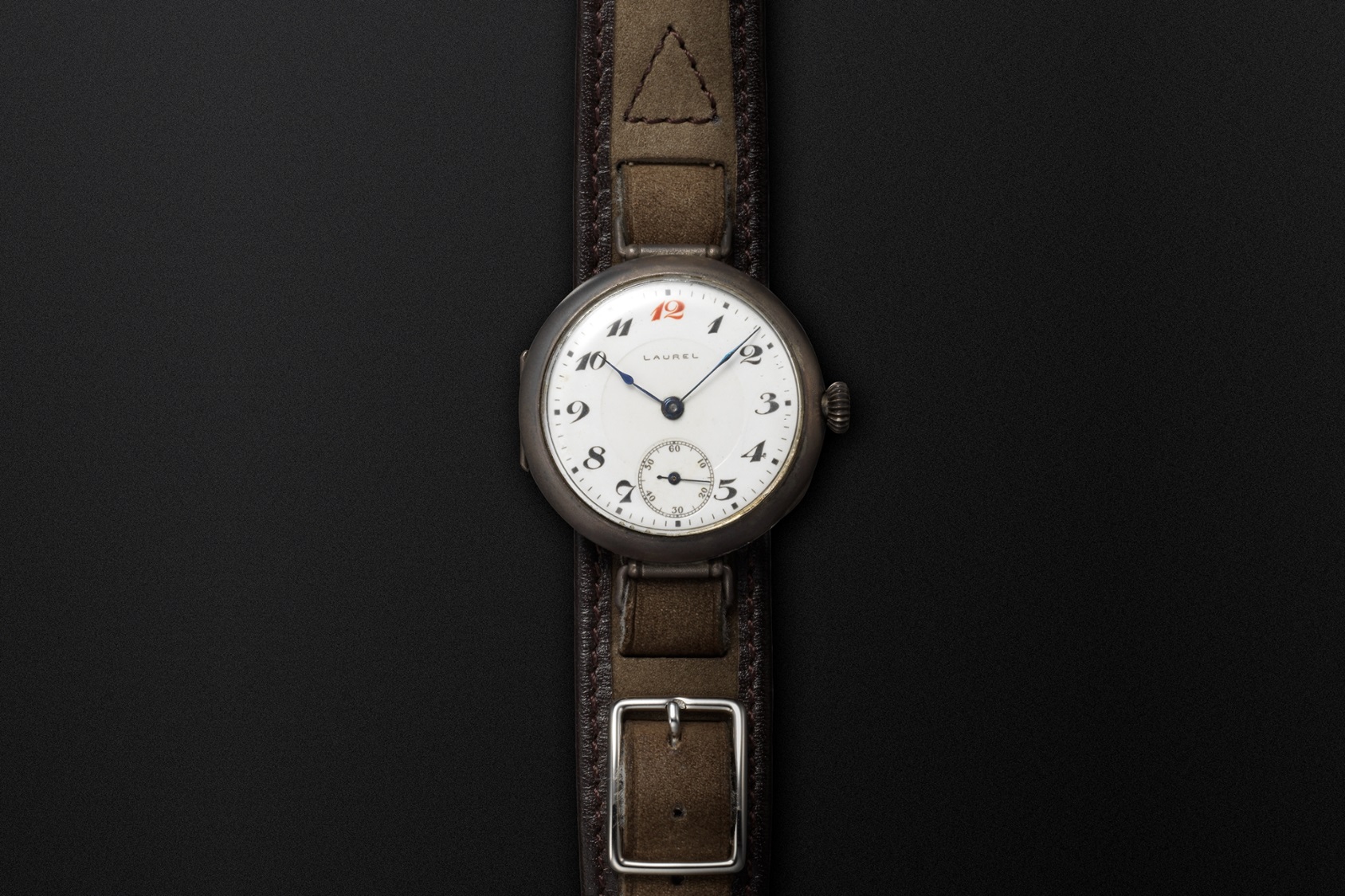
The Laurel, the first wristwatch made in Japan, was released in 1913. With a diameter of 29 mm, it was much smaller than the pocket watches that were the mainstream at the time and was thus difficult to manufacture. Whereas pocket watches were turned out at the rate of 200 a day, making 30 to 50 Laurel watches per day took a maximum effort. Inside was a seven-jewel hand-wound movement, shrunk to a diameter of 27 mm. Enamel was used for the dial.
In honor of this major accomplishment, Seiko has made limited-edition models of several brands that pay homage to the Laurel design. One of these is the Seiko Astron GPS Solar SSJ019. While borrowing such design elements as the white dial and red index for 12 o’clock that are Laurel features, it comes with the same caliber 3X62 movement as the new Astron sport design series and achieves a bold, contemporary appearance by means of the titanium polygonal bezel. Distinct to the limited-edition model, however, is the brown leather strap like the Laurel, making for a calmer and more relaxed look compared to a bracelet. It is an intriguing pairing worth considering purchasing along with the regular model.
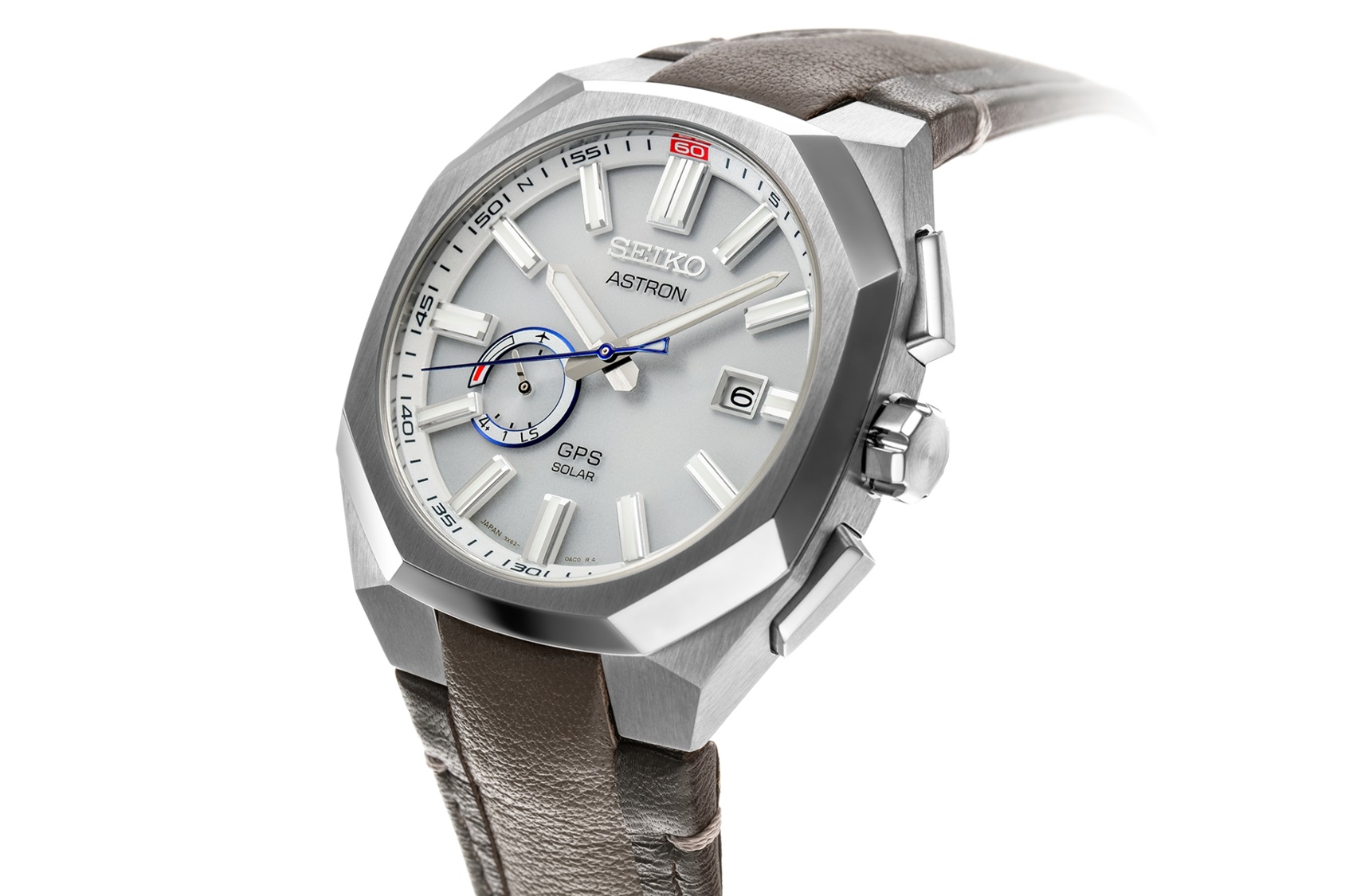
Seiko Astron GPS Solar: Seiko Watchmaking 110th Anniversary Limited Edition SSJ019
GPS Solar (Cal. 3X62). Titanium (super-hard coating) (diameter: 41.2 mm, thickness: 12 mm). Water resistance: 10 bar. Limited edition of 800.
Go to the product page